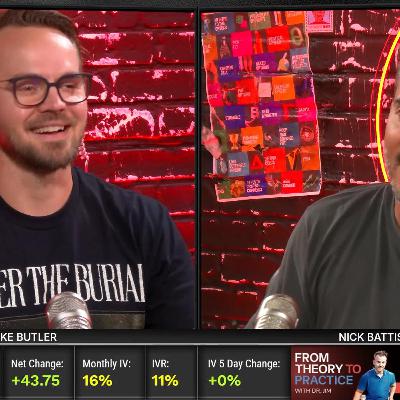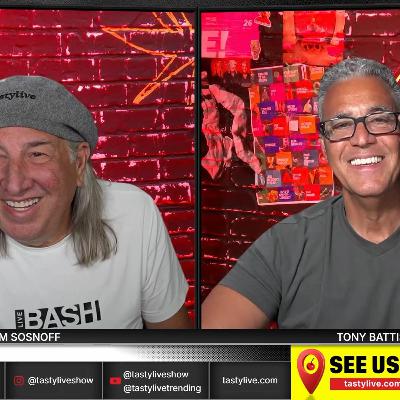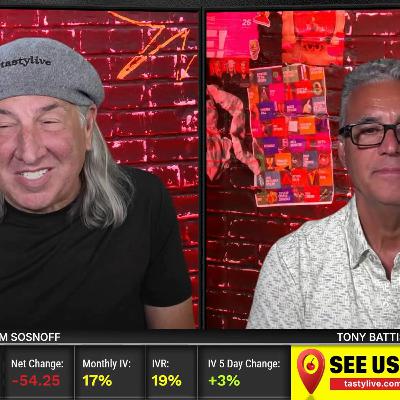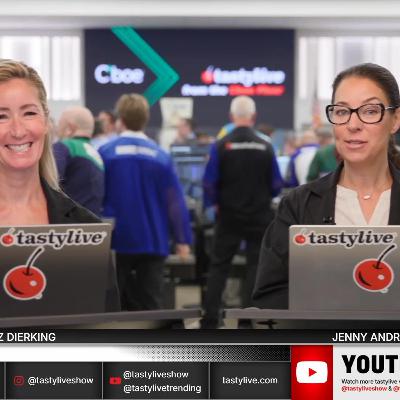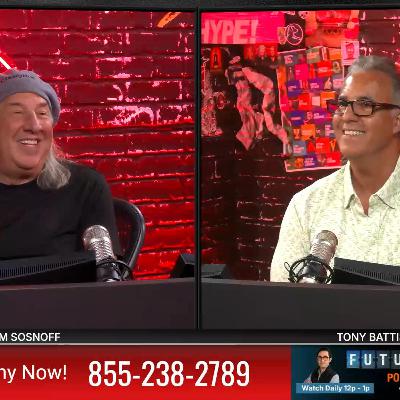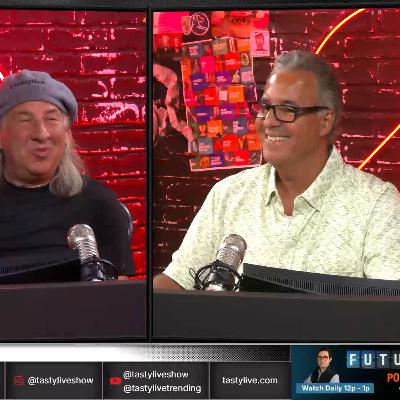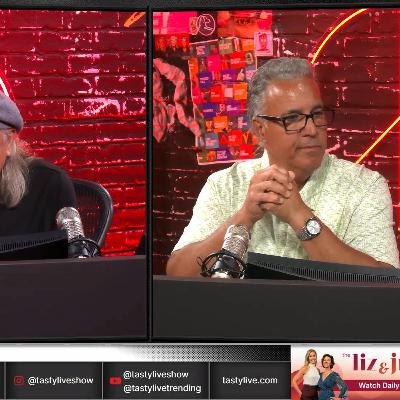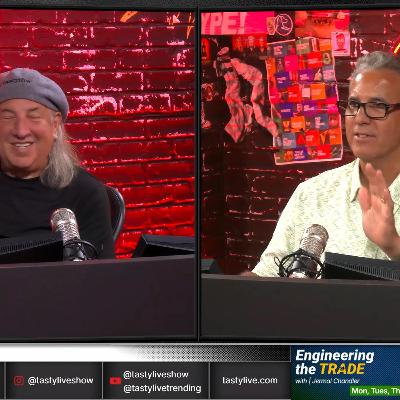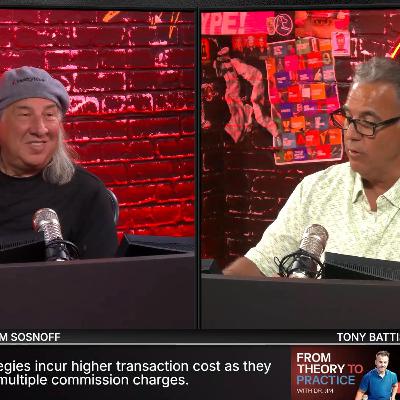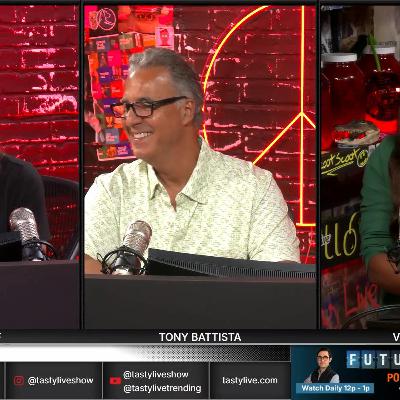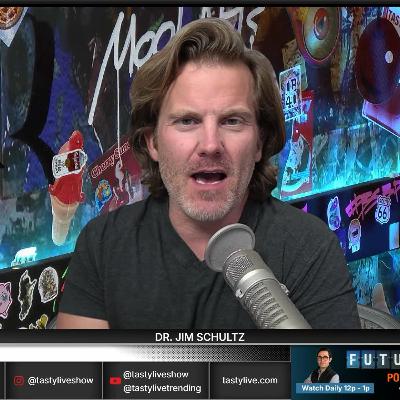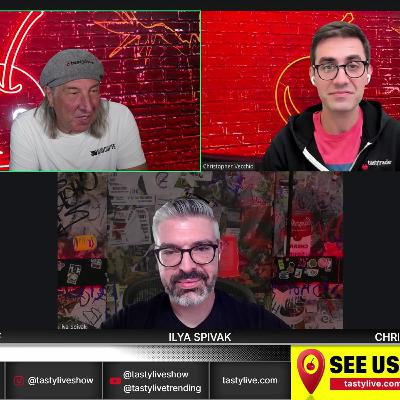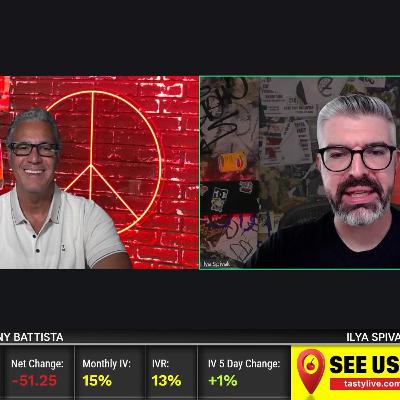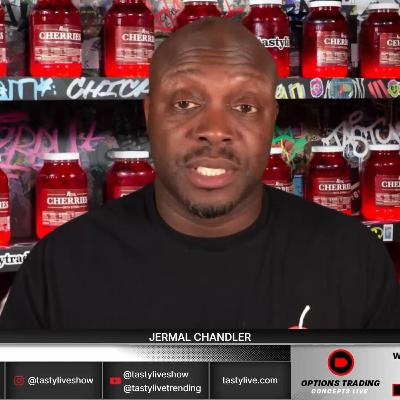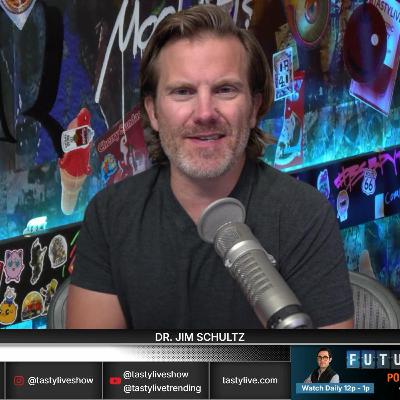Discover tastylive: Last Call
tastylive: Last Call

tastylive: Last Call
Author: tastylive
Subscribed: 7Played: 339Subscribe
Share
© ℗ & © copyright 2013 - 2025 tastylive. All Rights Reserved.
Description
Tom Sosnoff and Tony Battista review their trades of the day as well as analyze opportunities for the next trading day, all live, on Last Call.
2296 Episodes
Reverse
Gold (GC) and silver (SI) have surged recently, driven by expectations of interest rate cuts. Kraft Heinz (KHC) announced plans to dissolve its merger, aiming to refocus on grocery and sauce businesses after failing to achieve anticipated growth. Meanwhile, crude oil (CL) rose over 2% amid speculation about potential OPEC+ supply cuts. The week ahead features the non-farm payroll report, which may significantly impact market sentiments. Key financial metrics indicate a weak equity market as traders remain cautious ahead of economic indicators.
Market selloff defense strategies revealed! Watch as we break down the "Delta Buster" SPY options trade that capitalizes on volatility skew without capital outlay. Learn about strategic buffer trades for CoreWeave ($CRWV), our DocuSign earnings position, and why timing matters with protective strategies. As the VIX hits 18.66, remember: "you can't buy insurance when the house is on fire." #OptionsTrading #MarketVolatility
Tastylive research examined 30 years of market performance following three-day weekends, finding Memorial Day typically yields the most positive returns with a 61% chance of upward movement afterward, while markets generally show increased volatility on the first trading day after extended weekends.
The segment explored five effective methods to establish short positions in the market beyond simply selling stock. Using QQQ as an example, the team demonstrated how alternative strategies can achieve similar results with reduced capital requirements.
While shorting 100 shares of QQQ would require nearly $29,000 in capital, a synthetic short (selling a call and buying a put at the same strike) achieves the same delta exposure for less than half the capital ($12,783). More capital-efficient alternatives include skewed iron condors, short call spreads, and long put spreads.
For consistent results, research suggests selling 20-30 delta call spreads 45 days out and managing at 50% profit provides optimal risk-reward. The presentation emphasized taking profits early (25-50%) or managing early, as the final half of potential profit typically carries 80% of the risk.
Tom and Tony addressed viewer questions about stop-limit orders in zero DTE trades, gold futures contract selection peculiarities, and strategies for laddering short put positions across multiple months with decreasing strike prices when building bullish positions.
In this discussion, Tom and Chris analyze current market trends, emphasizing the recent performance of small caps and the mixed activity in tech stocks like Nvidia (NVDA). They note low trading volumes and high volatility conditions following earnings reports. With September approaching, they discuss potential opportunities in commodities, particularly gold (GC) and silver (SI), while expressing caution about equities. They conclude that the market might be leaning towards the downside, with a possible short position being favorable this week.
In this episode of "Engineering the Trade," Jermal Chandler discusses market conditions following NVIDIA's earnings and highlights the upcoming jobs report as key for the Federal Reserve's potential rate cuts. With the S&P 500 and other indices remaining near highs, he notes a low-volatility environment, particularly with the VIX around 15. Chandler shares his trading thoughts on CRM (Salesforce) and considers entering a Zebra options strategy post-earnings. He also discusses recent trades on gold (GC) and shares insights into his market positions amid fluctuating volatility.
Despite the market turmoil, in today's From Theory to Practice, Dr. Jim successfully managed several positions for profit.
The NVIDIA (NVDA) earnings trade produced positive results, with the butterfly closing at $3.05 (from $2 entry) and a call spread closed for $0.81 after being sold for $2, delivering approximately $2.25 in total profit.
Best Buy (BBY) bucked the downtrend, allowing for the exit of a vertical spread position at a minimal loss of about 30 cents. Additional trades included closing a Rocket Lab (RKLB) short put at 50% profit and exiting a Wolfspeed (WOLF) short straddle for approximately 30% of maximum profit.
Through all of this, Dr. Jim emphasized maintaining position size discipline while demonstrating how defined-risk strategies can be managed effectively even during significant market declines.
Comments
 United States
United States


